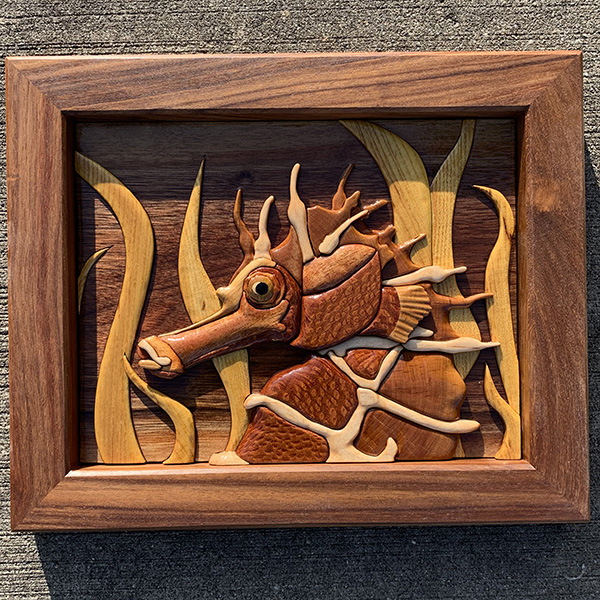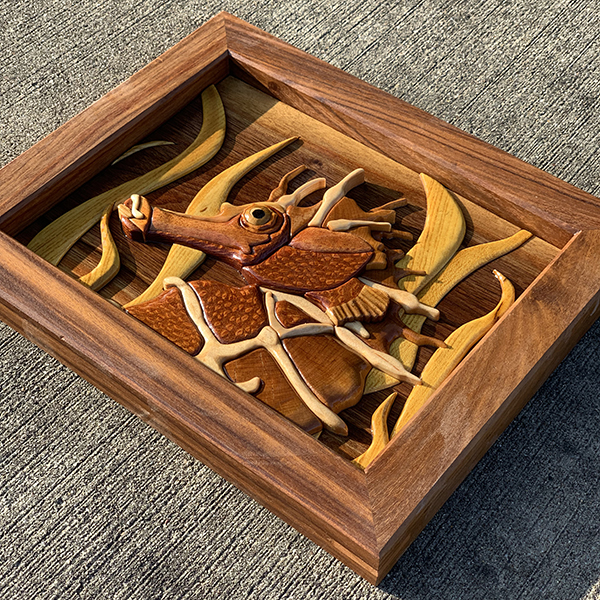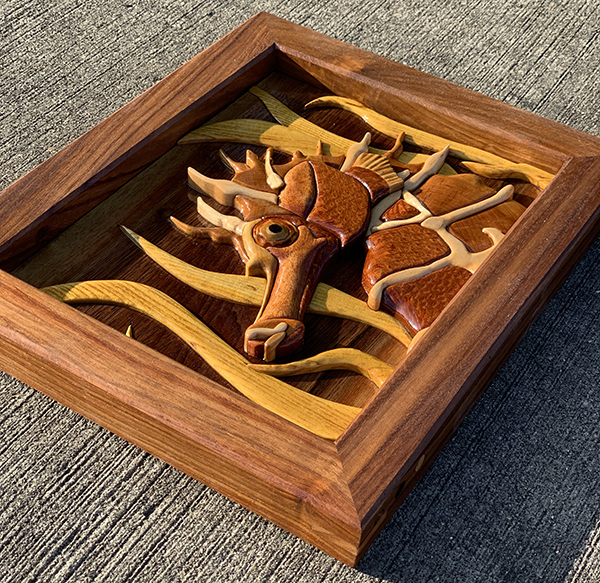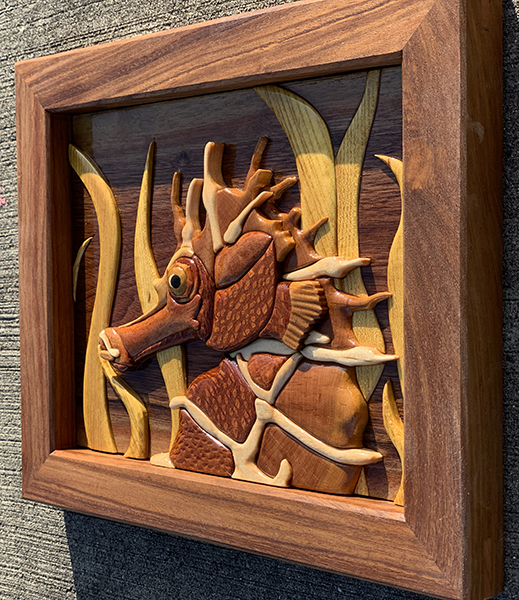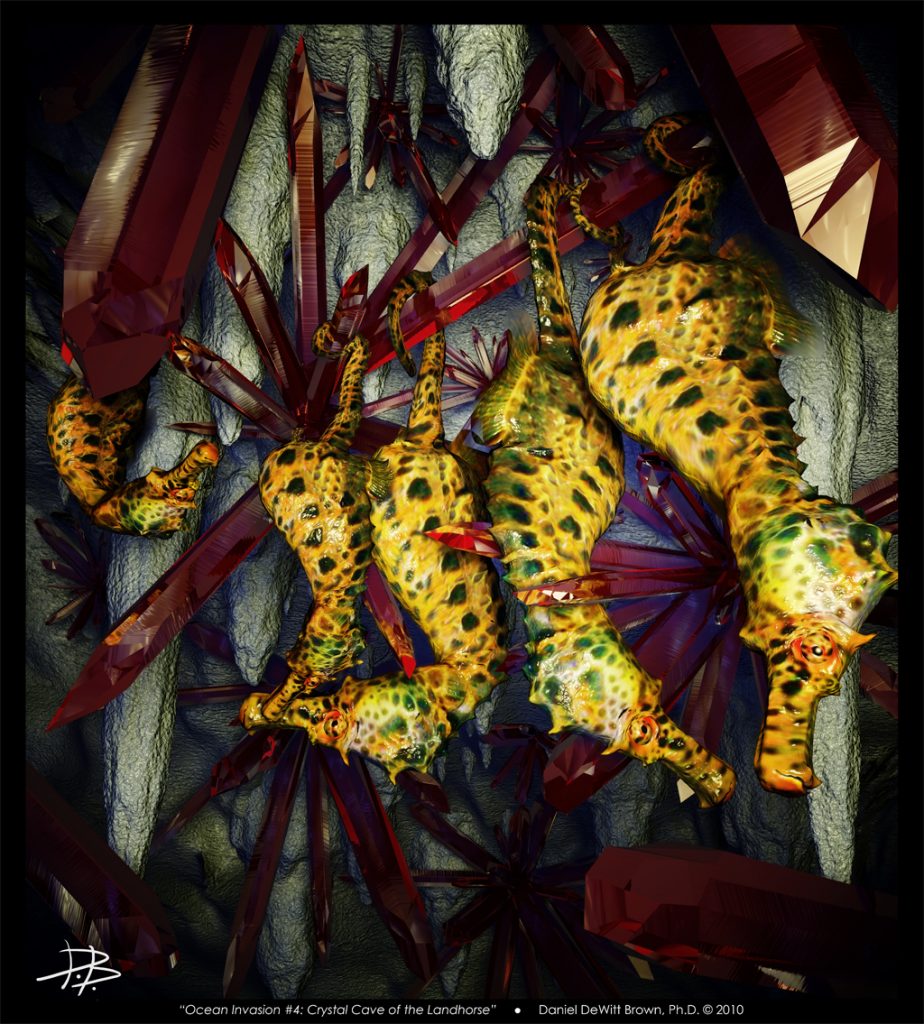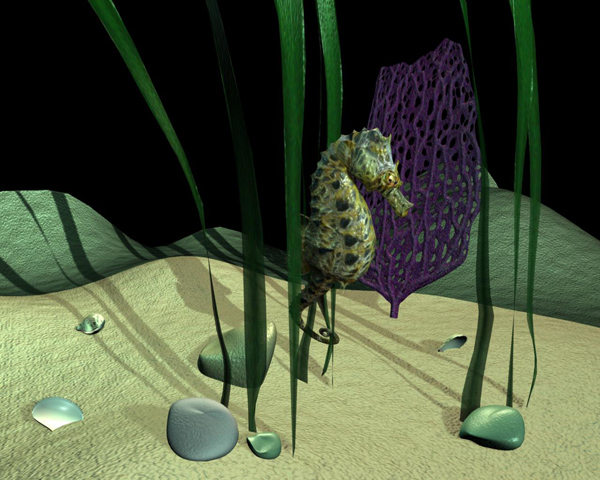Hippocampus, Daniel D. Brown, 2018
Wooden intarsia seahorse artwork, built from lacewood, cherry, mahogany, maple, walnut, mulberry, bloodwood, purpleheart, and ebony. The frame was made from reclaimed furniture: either black stinkwood or muninga (unclear which). The mulberry and cherry were milled myself from downed neighborhood trees. The frame wood came from a couple antique chairs purchased by my mother-in-law in Cape Town, S. Africa in the 1970s.
My final project of 2018 is now complete!
